Almost a year ago, I wrote about Ireland’s ELO rating* since June 1988 and Stephen Kenny’s job to reverse the slowly declining trend. The opposite has occurred since last March. The loss to Luxembourg last weekend meant that the senior team recorded their lowest ELO rank in over thirty years.
|
By David Butler Almost a year ago, I wrote about Ireland’s ELO rating* since June 1988 and Stephen Kenny’s job to reverse the slowly declining trend. The opposite has occurred since last March. The loss to Luxembourg last weekend meant that the senior team recorded their lowest ELO rank in over thirty years. *the ELO rating system is adapted from chess and scores soccer teams based on performance. Among a range of factors, points are awarded based on the type of match played (qualifier/friendly etc.), home advantage, opponent quality, goal difference and expected results.
By Robbie Butler
One year is a long time in football. The last year has felt like the longest ever. As the Republic of Ireland go in search of their first win under Stephen Kenny (in their 11th game of asking), it seems a long time ago since the team's last win - November 2019 versus New Zealand under Mick McCarthy.. There are undoubtedly a combination of factors that have made the past twelve months extremely challenging. Empty stadiums, travel restrictions, Covid withdraws, the list goes on. For me, the most worrying aspect of the team's performances is the contrast between McCarthy's second reign and that of the current manager. McCarthy's second spell in charge lasted 10 games, the same as Kenny to this point. He's record W5 D4 L1 GD+6. This includes competitive and friendly games but would result in 19 points under normal circumstances. In fact, this record is bettered by only one of the last 10 Irish managers (back to John Giles) for the first 10 games - Brian Kerr (21 points). Of course, the counter argument to this is that the new manager is attempting something revolutionary and changing the "way we play". I have moved to John Maynard Keynes school of thought when those in favour of this now argue it is a long run project. "In the long run, we are all dead". By David Butler Now that the dust has settled on the Cheltenham Festival 2021, we can reflect on the performance of the tipsters last week. The chart below shows the performance (profit/loss) of the traditional newspapers and recognised online tipping sources who made regular predictions. Non-runner predictions were excluded and a hypothetical stake of €10 (€5 each-way) was placed on the starting price of each horse predicted to win. If a punter was to follow the tips from the Scottish newspaper The Daily Record they would have returned a profit of €305.44 over the four days. This profit was driven by their excellent performance on Wednesday and Thursday (in particular, tipping Put the Kettle On at 17/2, Sky Pirate at 14/1 and Flooring Porter at 12/1). The Sun finished second - with profits heavily reliant on tipping Belfast Banter at 33/1. Five of the tipsters made profits on both win and each-way bets. From the tips offered on horseracing.net only Spotlight made both win (€181.47) and each-way profits (€123.86). 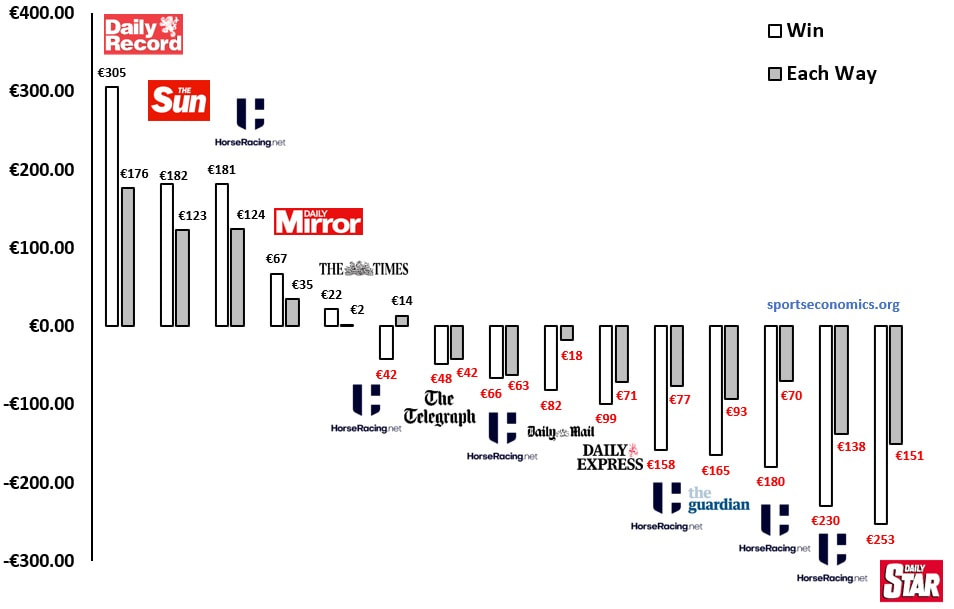 By Robbie Butler
The Football Association of Ireland are currently seeking to recruit a Insights/Research Manager. The Insights Manager would be primarily responsible for collecting, researching and interpreting data, and articulating insights that drive the Association's objectives. The successful candidate will be expected to provide research and insights support across the Commercial Partnerships, Sales and Ticket Operations and will play a crucial role in measuring and valuing our sponsorships. Closing date for receipt of applications is close of business on 16/04/2021. Further details on this position can be found here. By Robbie Butler
A football title for a horse racing post that will follow. But these are the iconic words of Irish jump racing handicapper Andrew 'Sandy' Shaw when asked why, after 4 days of racing at the 2021 Cheltenham Festival, the score for the week read Great Britain 5 - Ireland 23. Shaw continued "Back in the 80s, in the bad days as such when we were lucky to come out with one winner, it used to be the other way around. We didn't win any handicaps over there but it's turned on its head now and I think that's one of the main reasons – we just have the best horses. It's a bit like the Premier League versus the Championship. It's a great tribute to Horse Racing Ireland and the programming committees that are there. We have the races in place to encourage people to come over; prize-money makes such a big difference as well. Sporting John's Grade 1 win in the Scilly Isles Novices' Chase was worth £20,000 to the winner and that would probably be €50,000 or €60,000 here. I think it's a straightforward situation, it's all about the economics. The money is here and the best horses are here, that's why we're so successful." (The full piece can be found here.) There you have it. "It's all about the economics". Our blog addressrd this on several occasions in the past. This link here from 2019 looks the the difference in prizemoney at both Dundalk (Ireland) and Lingfield (Great Britain). This here is a similar story from 2014. And this here is from 2013 and compares Ballinrobe to 4 other Britisj racecourses Finally, this link here, plots the success of Irish horses at the Cheltenham Festival and Irish government support of Horse Racing Ireland. The piece is from 2013 and the Irish success has increased since. Our soon to be published book, Advances in Sports Economics, has a chapter dedicated to this. By John Considine  As a child I would very occasionally watch sport broadcasts with my grandfather. Sometimes, on our national holiday (March 17th), we would watch the Railway Cup games. A Munster versus Leinster game would pit us against each other. He was only mildly interested in gaelic games and would sometimes rest his eyes during these games. That would not happen during the rare occasions that there was a horse race broadcast on TV. His interest might be heightened by a small bet on the given race but the bet was a minor consideration. His gambling was woven into his day. A weekday in his early retirement years would see this 66-year-old cycle three miles to the nearest town to buy a newspaper. The Irish Press would be brought back home and read over breakfast. The racing pages would be studied in great detail. It would begin by an examination of the previous day’s results so as to confirm how badly some of his choices had performed. Then it was on to selecting that day’s runners. Later in the morning he would again mount the bicycle and cycle back into town to place his bet. Another six mile round trip to place a bet that would be denominated in pennies. Twelve miles cycling before lunch to engage in a pastime. The financial losses were tiny and they had no impact on my grandmother or the fourteen children they reared. Unfortunately, not everyone is so lucky. The damage that gambling can do is one of the reasons that the UK government is considering regulations to limit the links between sport and gambling. It could mean that betting enterprises are no longer able to advertise on the jerseys of Premier League teams. Understandably, sports organisations are worried about the potential loss of a revenue source. A few months ago I heard about the proposal and I started to look for the advertising in sports broadcasts – mainly Premier League games. However, it was not long before I lost interest in the gambling firms and became fixated with the number of tyre companies advertising on Premier League jerseys and around Premier League grounds. Nexen and Yokohama can be found on the shirts of two of the top-4 teams. On the advertising hoarding you will find Apollo and Tomket at a number of grounds (and frequently advertised in the same ground). Kuhmo is another brand. Davanti advertise prominently behind the Italian manager on Merseyside. It seemed to me that Hankook had some sponsorship deal linked to the Europa League. However, I noticed that it was a different tyre that appeared on the hoarding in the San Siro when AC Milan hosted Manchester United. When Inter play in the San Siro then it is Pirelli that dominates. As a more traditional economist, my default position is that the advertisers know what they are doing (while accepting that this may not be the case). I presume they have examined the audience figures and determined that this is an efficient use of advertising funds. But I’m struggling to imagine how my grandfather’s betting on horses, and his choice of bicycle tyres, would have changed if he was exposed to the current level of advertising. Wishing all our readers a very happy St. Patrick's Day from Ireland.
by Declan Jordan This season’s Airtricity League of Ireland kicks off this week. The Premier Division features 10 teams, with 12 teams in the First Division. Colleagues in UCC will be disappointed that this season the local side, Cork City, will be plying their trade in the First Division. The relegation of Cork City last season followed a rapid decline, since the club were league and cup double winners as recently as 2017, and were in the top two league positions for the five seasons from 2014 to 2018. Aside from the local disappointment, the relegation of Cork City also has implications for the geographical representation of the league and reduces the reach of the league into the major population centres in Ireland. This season there are no Premier Division clubs in the second, third, and fourth largest cities in Ireland. Cork, Limerick, and Galway will all have teams in the First Division this season. This is a combined urban population of approximately 400,000 without a top flight team. The relegation of Cork City, even with the relegation of Shelbourne from Dublin, and their replacement with Drogheda United and Longford Town means there is a greater concentration of clubs on the east coast. The map below shows the location of clubs in the Premier Division in 2020 and in the coming 2021 season. The red dots represent clubs in both; green are clubs only in 2020, and yellow dots represent clubs only in 2021. The green line demonstrates that the west and south of the island are not represented in the 2021 Premier Division season. By calculating the distance between every club in the division (using Google Maps) the level of spatial dispersion can be assessed. In 2020 Cork City had to travel furthest on average than all of the other clubs with an average distance to all of the other clubs of 296km. This ‘honour’ now goes to the only remaining Munster club, Waterford FC, who will travel 246km on average this season. The presence of Derry City and Finn Harps reduce their average travel distances because of their proximity in the peripheral north-west of the island. Six of the clubs (clustered around the greater Dublin area) have average distances of less than 130km this season. The average distance travelled has fallen from 190km to 158km. This means the concentration of east coast/Leinster clubs provides means that they have notably lower average distances than the average. The lack of clubs in the top flight from Sligo in the north-west right down the west and south coast as far as Waterford means the league is geographically lopsided. It will have to be seen how competitively lopsided the league will be on the pitch.
By John Eakins
It is not a surprising thing to say that the next few years will probably see a huge amount of research on the impact of the COVID-19 pandemic on sport. It will be interesting to see what the consensus will be. I’m sure most will find the impact has been negative, particularly on the business side of things with the postponement of many sporting events and when events are staged, the lack of supporters in attendance. The impact on individual or team sporting performance might also be negative overall, with possible differences in the scale of the effect depending on the sport and whether it is team or individual based. But could there be positive impacts too? It is on this topic that I was struck by the performance of some of our Irish running athletes since the start of the year. An indoor meeting was staged in Ireland in February 2021 to allow (mostly) Irish athletes attain qualification standards for the upcoming European Indoor Championships and world ranking points for qualification for the Tokyo Olympics. On the back of a severely disrupted 2020 season, including the postponement of the Olympics, some rustiness on their part might have been expected. However, a number of personal bests (PBs) were posted and a national record (NR) were also broken in the 800 metres for men (see results here). In fact, the NR was broken by the first two men past the winning line, Mark English and Cian McPhillips, and the time by McPhillips was also the second fastest 800m run indoors by an 18-year-old in European athletics history. Several fast times were also posted in other races including the 2nd and 4th fastest runs by Irish athletes in the 60m for men, the 4th best Irish time in the 200m for men, the 2nd, 3rd and 4th fastest Irish times in the 400m for women and the 2nd, 3rd and 4th fastest Irish times in the 800m for women. Fast times by Irish athletes have also been recorded in other indoor race meetings since the start of this year. Síofra Cléirigh Büttner ran the 2nd fastest indoor 1,500m by an Irish woman on the 13th February. She also broke the national record for the 800m in an indoor race meeting on the 21st February. This was after Nadia Power has twice broken this record at indoor race meetings in January and February. While the subsequent performance of our Irish athletes at the recent European Indoor Championships did not continue on their good season form displayed in January and February, Phil Healy did post the 2nd fastest time by an Irish women in the 400m final and Sarah Lavin posted the 2nd fastest time by an Irish women in the 60m hurdles at the championships. The purpose of presenting all the above is to pose the question that the COVID pandemic and associated disruption could have some positive impact on the performance of Irish athletes (or at least it hasn’t had a negative impact). Taking time away from the track to concentrate on improving training techniques and/or allowing time for rest and recuperation from injuries could have been a good thing for some Irish athletes. Of course, there are a myriad of other reasons for the recent excellent performances by Irish runners and this is just a hypothesis which is worth testing. As I said at the beginning of this piece, it will be interesting to see research develop in this area and a proper examination of the potential negative and positive impacts of the disruption to elite sports people, such as running athletes, due to the COVID pandemic. By David Butler
In many horse races at Cheltenham next week we will see ability handicapped to engineer balance. Can manufacturing outcome uncertainty in horse racing be exported elsewhere? Below is a table of the 2020 Six Nations matches that considers the counterfactual world where balance was constructed. The handicap is imposed on the home team and is inferred from betting odds, that define a point where each nation has an equal probability of winning. In this world, the average score difference would reduce from about two converted tries to one converted try. The fixtures marked in blue are the ones which would have seen an alternative outcome. Since Italy joined the Six Nations in 2000, they have only won 12 times (and drawn once). There is a clear balance problem with all of their fixtures. Their highest finish has been 4th and they have placed last 16 out of the 22 years. Under a handicapped model, the matches against Italy would represent a far more interesting sporting spectacle. While football round robins (UEFA European and World Cup qualification) are also afflicted with the same balance issue, applying a handicap system might be trickier given the scoring system and weight of goals in football. Would Irish fans be more likely to tune or attend if they knew they had to make up a 28-point head start against the Italians? It does sound more exciting. Then again, there is evidence that sports fans savour the crushing win. |
Archives
June 2024
About
This website was founded in July 2013. Categories
All
|
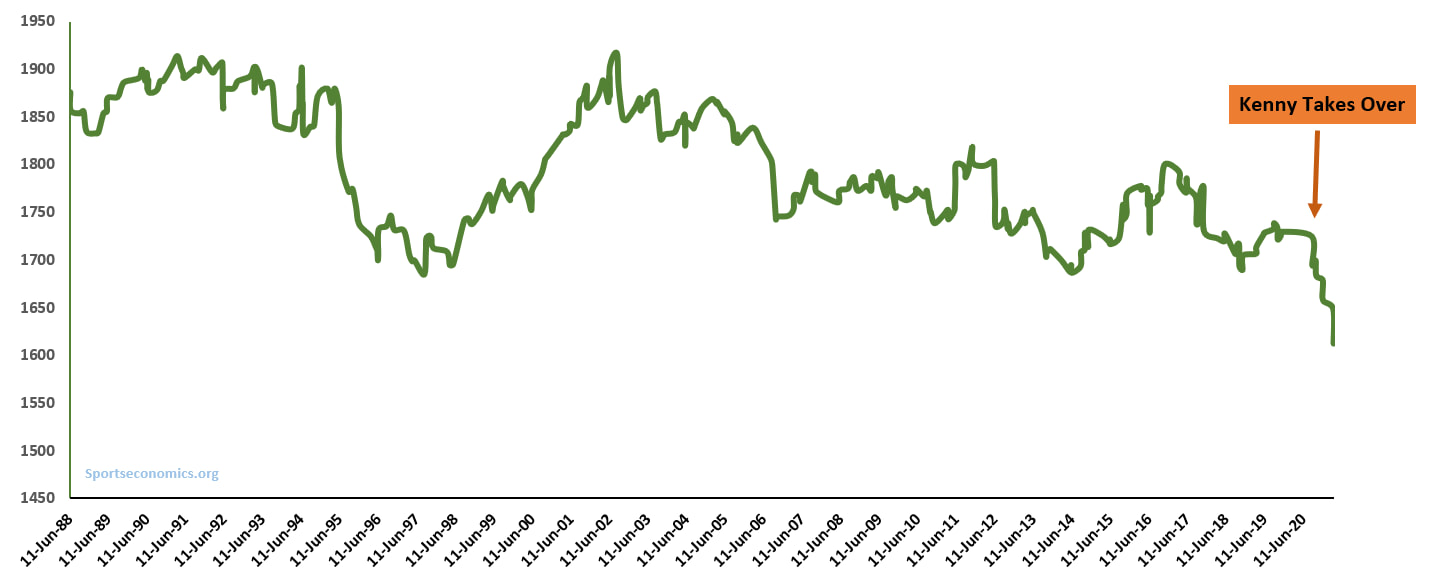
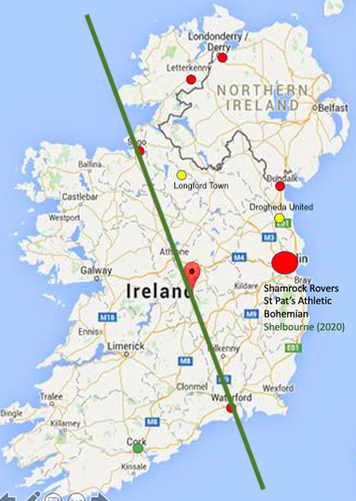
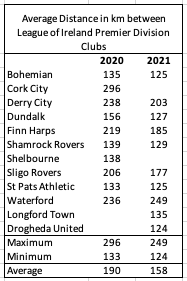
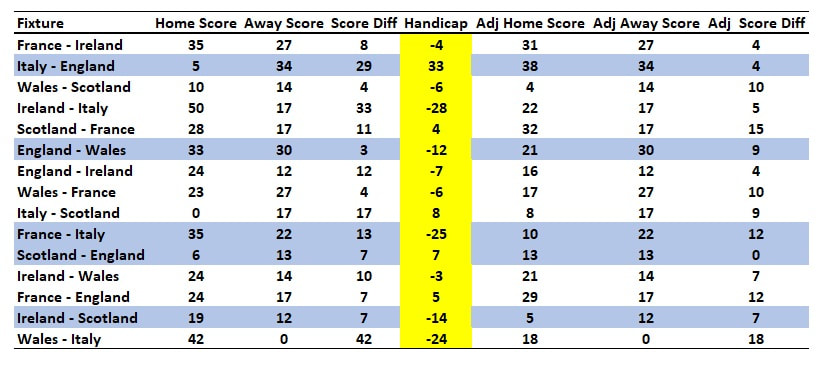
 RSS Feed
RSS Feed